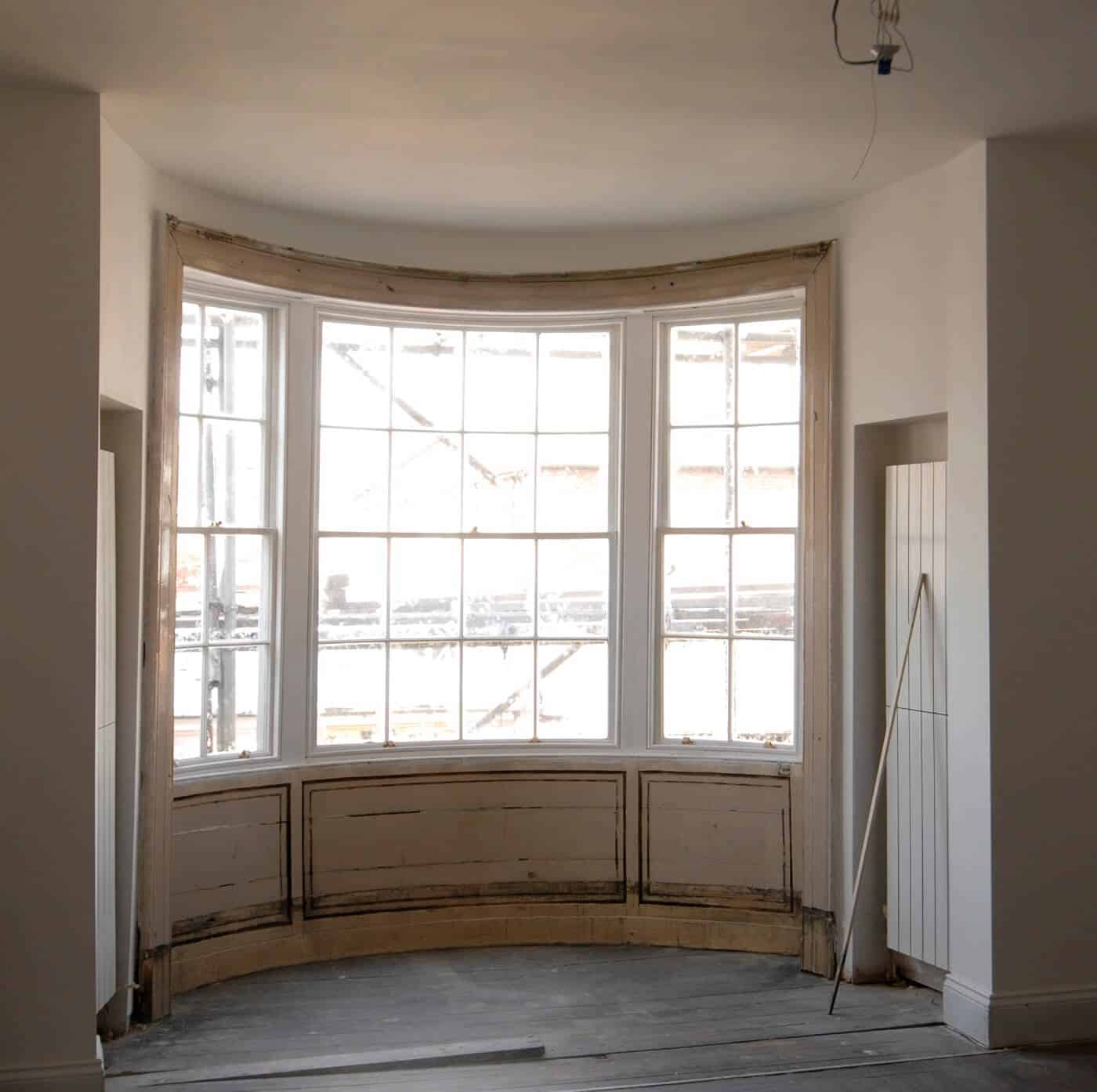Sash windows were first created in the 17th century when weights and pulleys were applied to frames. The original designs featured small panes of glass in the windows because of the poor quality of the material that was available at the time. In the 18th century the manufacturing techniques and materials improved substantially, allowing larger panes to be made and used in windows. This led to the creation of the distinctive Georgian style with its six panes. The stunning crown glass was also created in the 18th century with its curved ripples and bellied effect. However, this material is no longer manufactured and few examples of it still exist.
In the 19th century the Georgian style remained popular, but lying panes started to eat into this popularity and gain a loyal following. There was also a shift in the type of glass that was used, as crown glass was gradually replaced with either cylinder sheet or plate glass. Even larger panes started to be used, with fewer subdivisions, culminating in sashes with a just two large panes.
Sash windows from towards the end of the 19th century and the beginning of the 20th took a unique approach to designs. They commonly feature one or two large panes in the lower sash and larger number of smaller panes in the upper sash. In a number of cases, particularly properties before the mid 1930s, the upper portion of the window even included stained glass images.
Although no longer as popular as they once were sash windows are still evident on a number of properties today. Retaining them is important because they are an integral part of the character of buildings, particularly older ones.
At David Humble we specialise in sash window restoration in Northumberland and are committed to helping people maintain the windows on their properties. We are highly experienced and have the necessary skills to repair, restore and maintain sashes from all kinds of periods.
